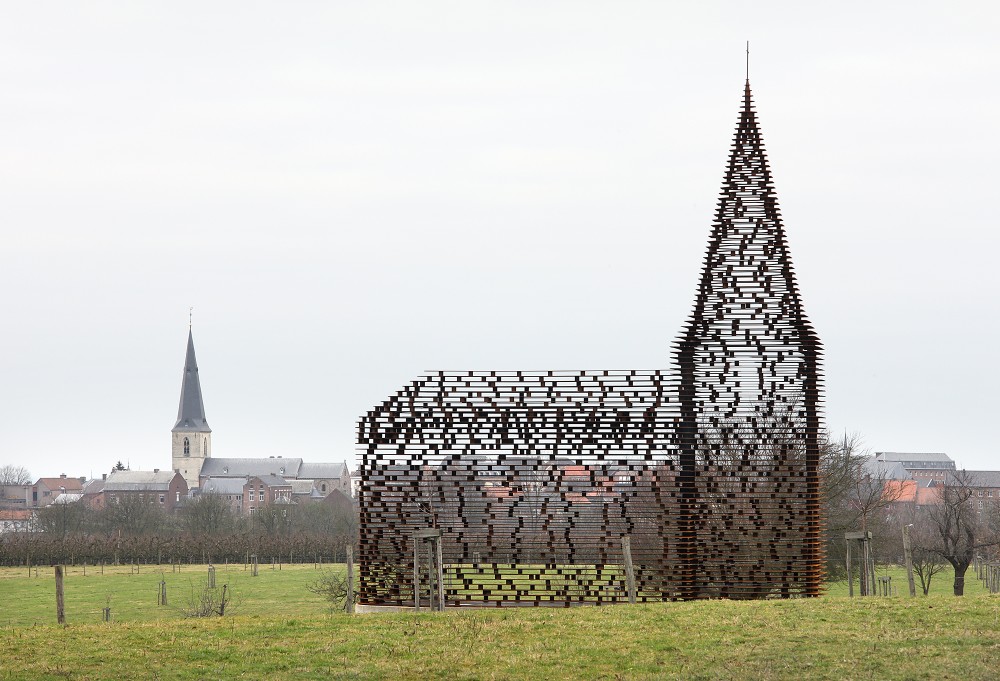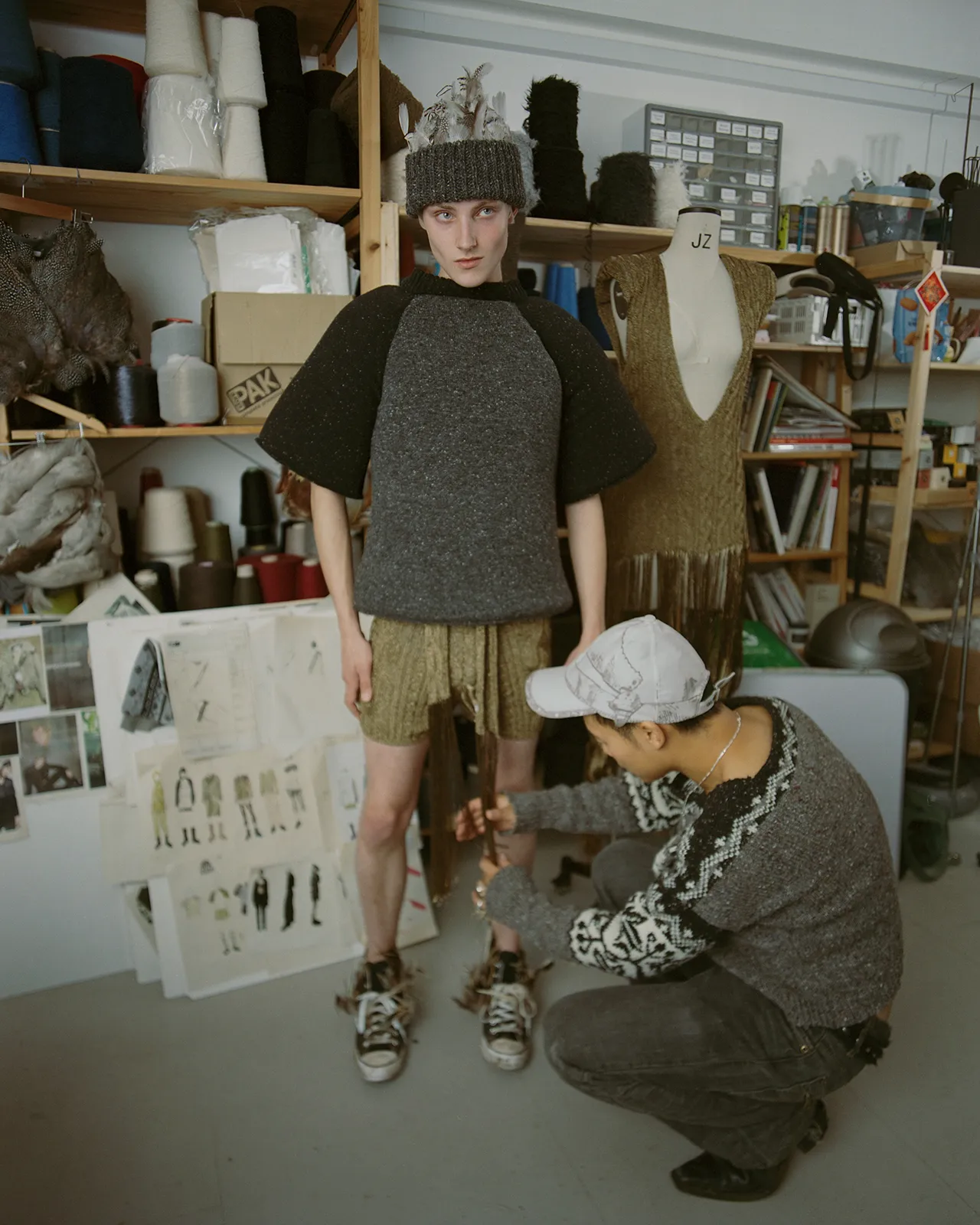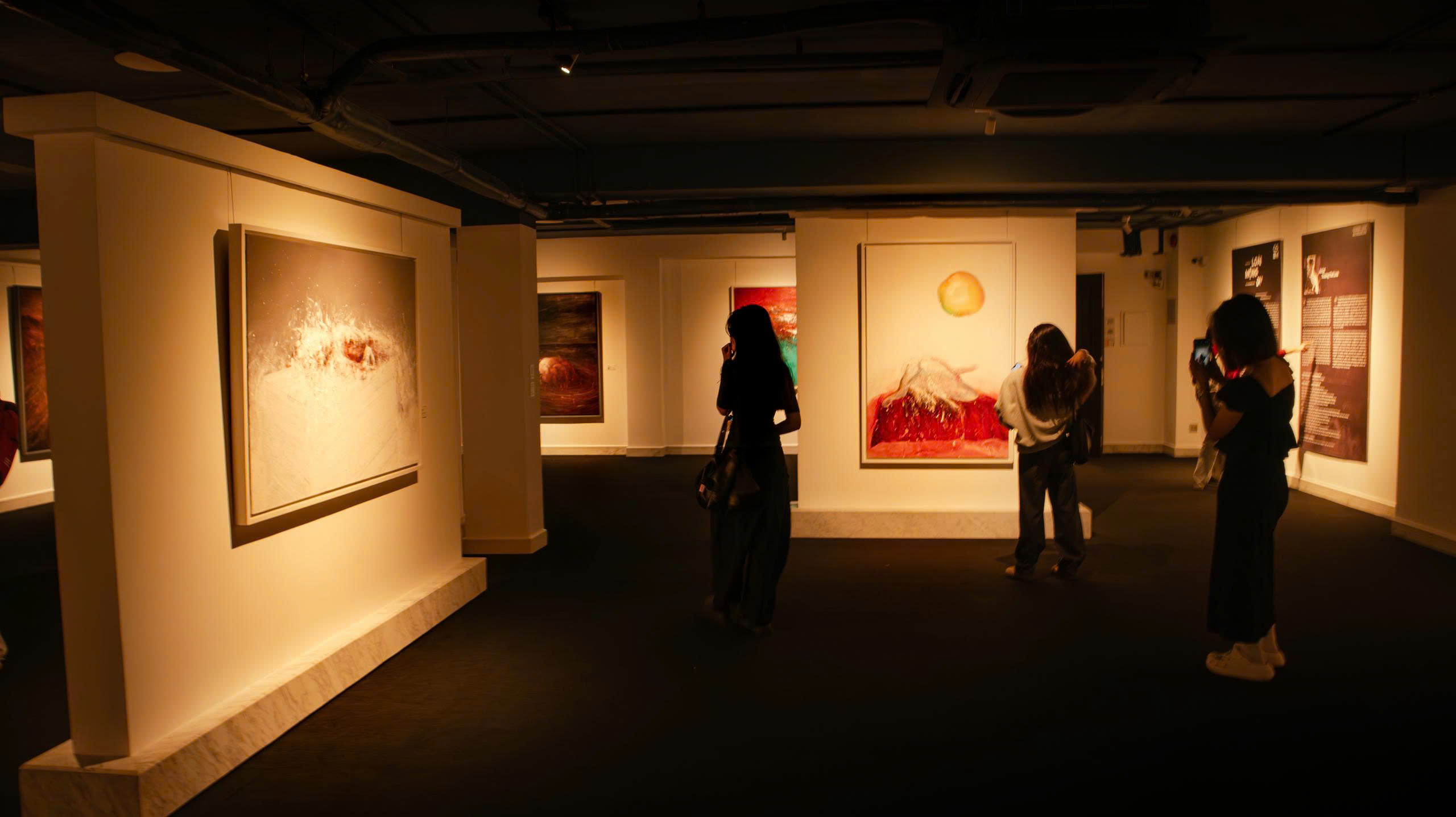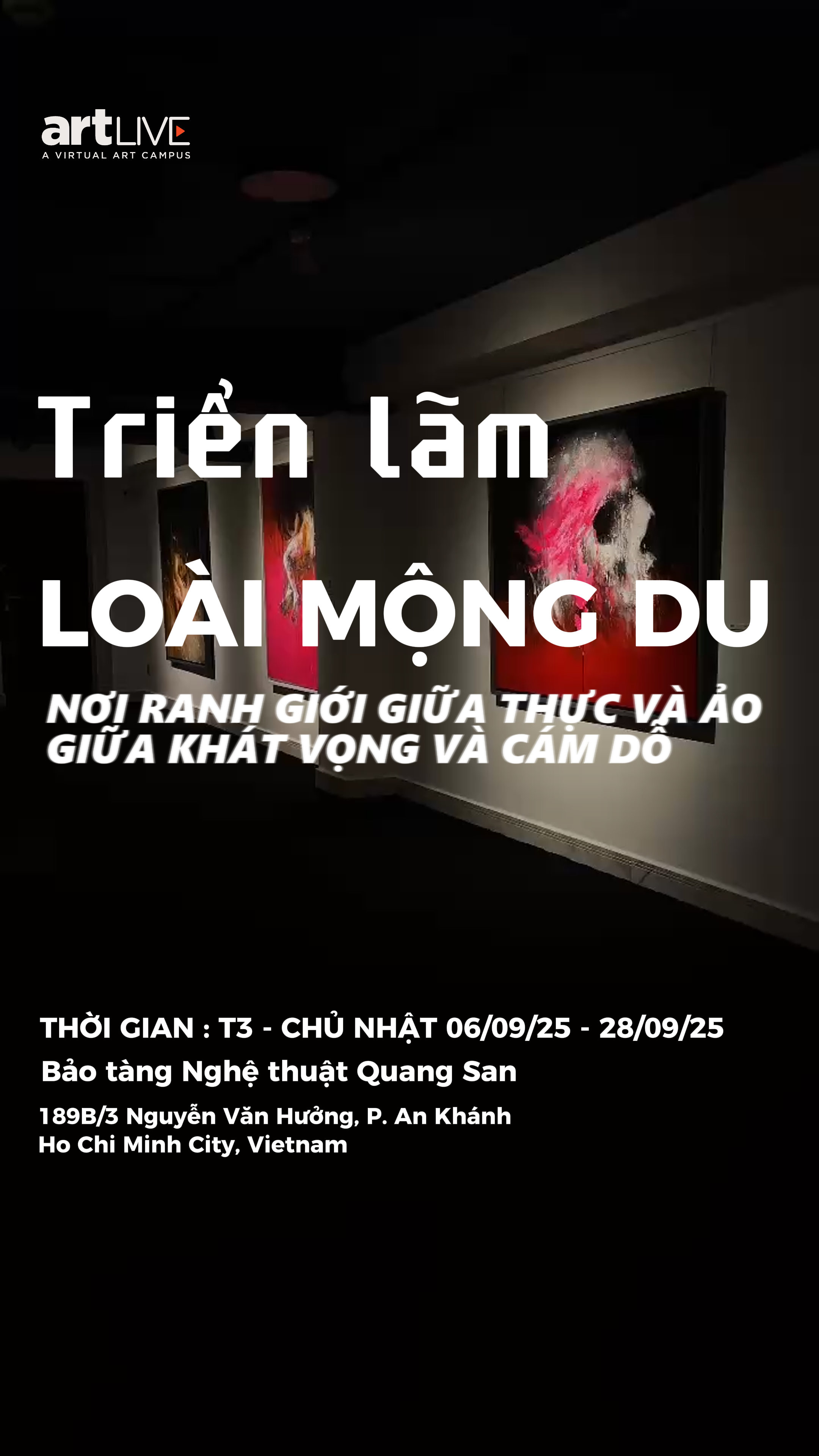artLIVE – ‘Reading Between the Lines’ is a unique art installation situated in the tranquil fields of Borgloon (Belgium). This ghostly church seems to appear and disappear depending on the viewer’s perspective, offering a fresh and captivating visual experience.
Created by Belgian architects Pieterjan Gijs and Arnout Van Vaerenbergh of the firm Gijs Van Vaerenbergh, the artwork mimics the shape of a church but is constructed from stacked layers of Corten steel, creating a semi-transparent effect. Based on the viewer’s angle and distance, the structure can either blend seamlessly into the landscape or appear as a solid.
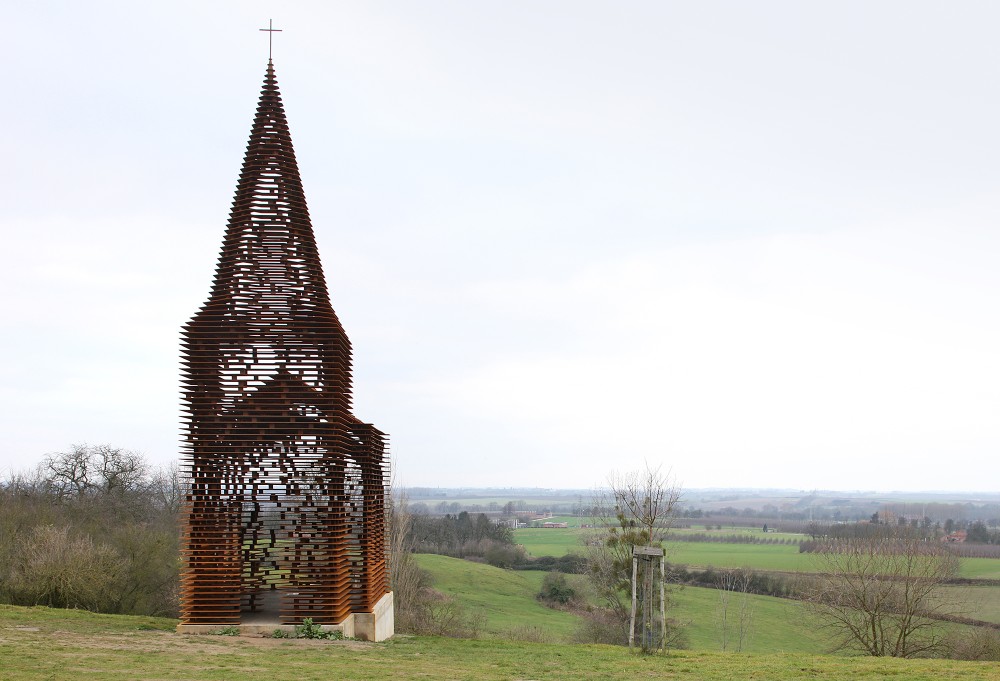
Since 2007, the duo has completed numerous significant public art projects. Their work is experimental and highly autonomous, focusing on reflection, the physical sensation of a space, and the viewer’s perspective.
‘Reading Between the Lines’ – A playful visual experience
‘Reading Between the Lines’ is located in the Limburg province of Borgloon (Belgium) as part of the public art exhibition ‘pit’, organized by the Z33 art institution under the Z-OUT project.
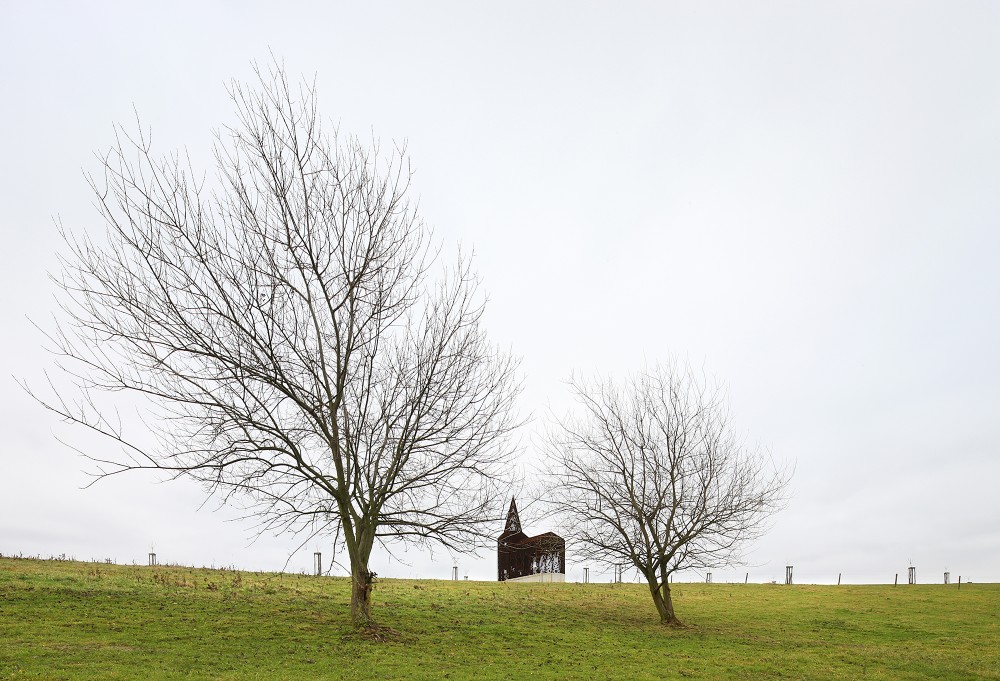
After finalizing the technical drawings, the architects divided the church’s structure into 100 horizontal layers of Corten steel. Over 30 tons of steel were laser-cut at the Cravero factory, with each piece numbered for precise assembly.
The fabrication process took about seven weeks, followed by three weeks of pre-welding the layers with more than 2,000 spacers. Another week was spent organizing all the components. On the day of construction, the entire structure was erected in a single day, from morning until evening. The steel layers were bolted directly onto a concrete foundation and spot-welded to ensure stability.
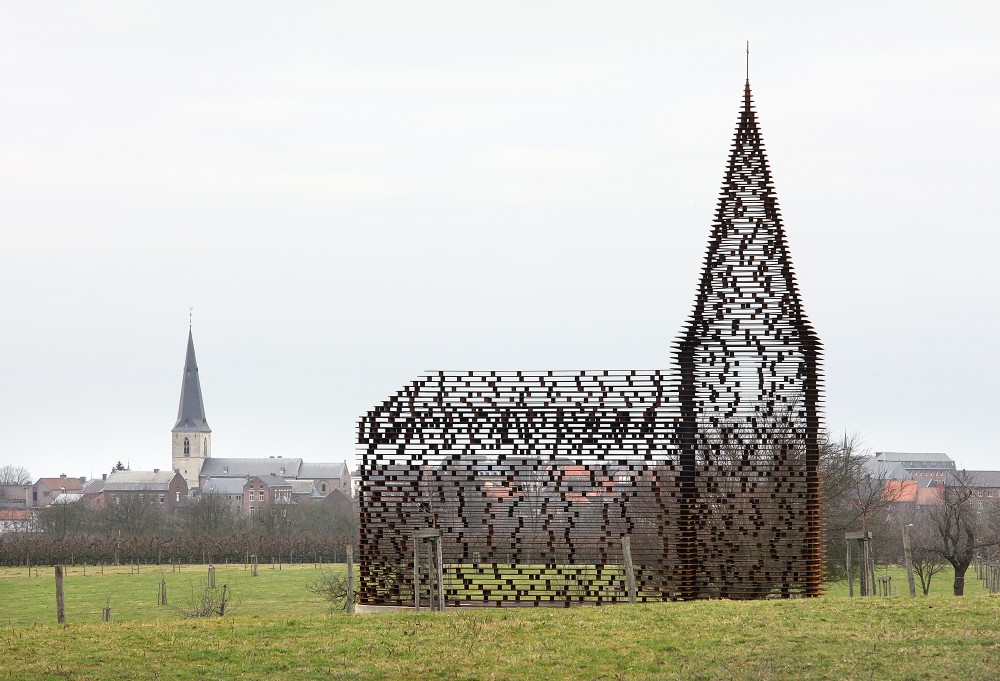
The installation acts as a visual puzzle. Depending on your viewpoint, the church may partially or completely dissolve into the surrounding scenery or stand as a solid, monumental structure. Up close, the intersecting steel plates give it a sturdy form, while from a distance, the church becomes an illusion—a series of “lines” floating in space.
This creates a sense that the structure and the landscape are merging, offering a stunning and profoundly artistic visual experience. When you observe the piece, you’re not just looking at traditional architectural elements like form, proportion, or layout; you’re moving beyond them. You’re invited to pause, reflect, and look inward to find a unique artistic connection.
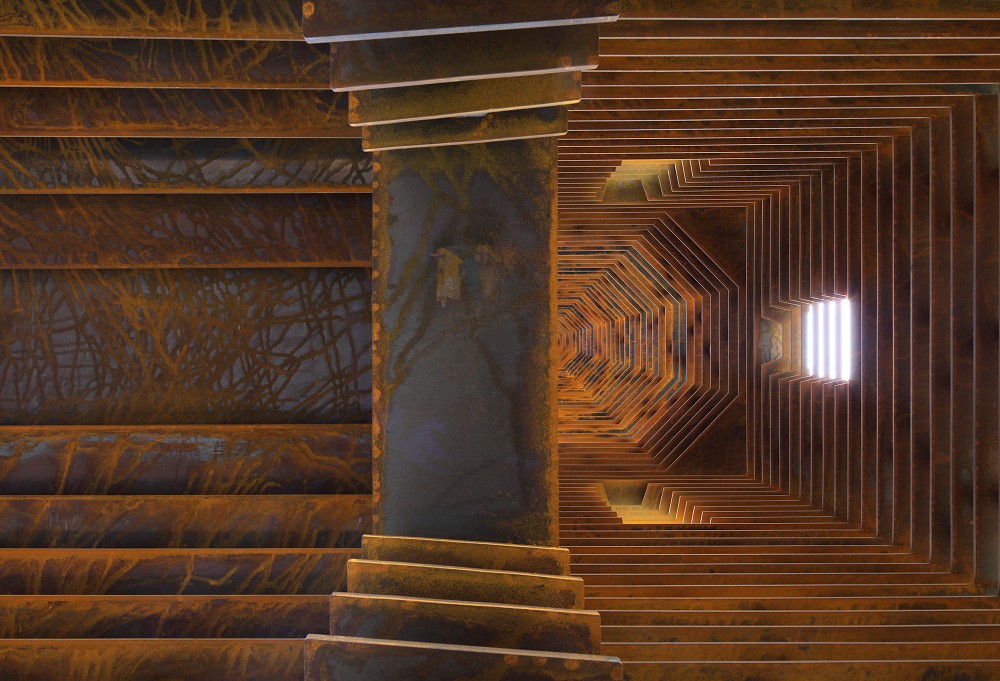
Many visitors have shared that the piece evokes a feeling of tranquility and separation from reality while prompting deep thoughts about faith, space, and personal perception. Each viewpoint offers a different sensation, making the installation a perfect destination for anyone who appreciates art, architecture, and contemplation.
‘Reading Between the Lines’ – A new concept of architecture
‘Reading Between the Lines’ demands that viewers engage their minds to truly perceive it, requiring them to change their perspective to ‘read’ the surrounding space through the architectural ‘lines.’
The installation breaks down traditional architectural conventions, opening up a new dimension in contemporary design. This church has no specific religious function; instead, it emphasizes visual experience, creating a contemplative space for reflecting on the role and presence of churches in modern life—both tangible and intangible.
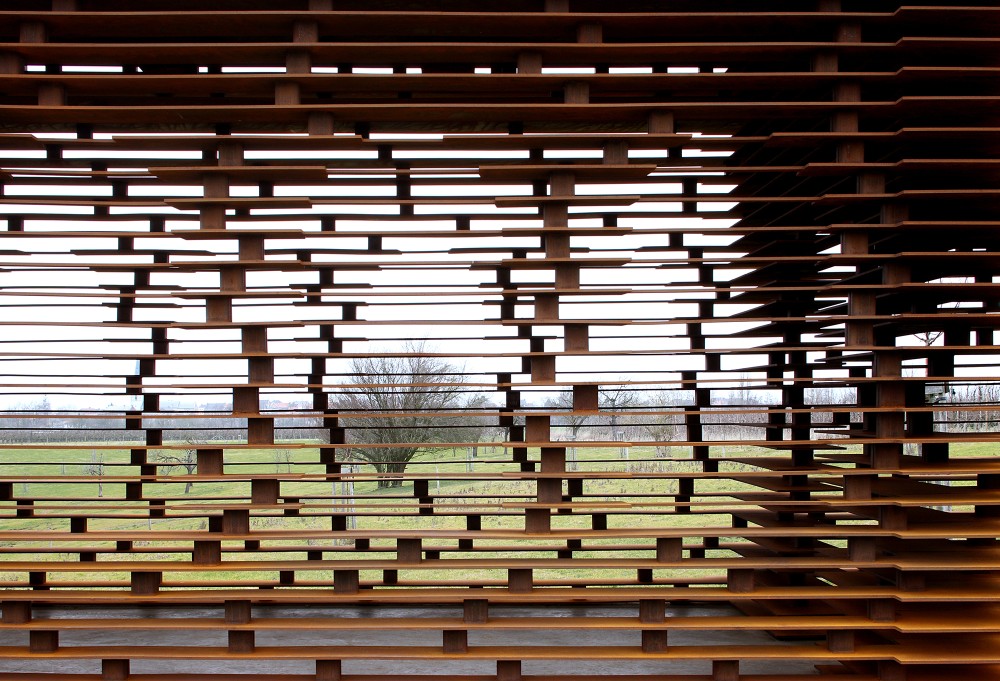
Architect Arnout Van Vaerenbergh once shared in an interview, “Reading Between the Lines and art have a deep historical connection. We continue to explore that intersection, creating works that have an architectural form but evoke a sense of openness and freedom. An important characteristic is that our works often don’t serve a clear function. They focus on spatial experience and how people react and perceive it.“
This perfectly illustrates the shift in modern people’s perceptions and needs regarding how they use and interact with spaces.
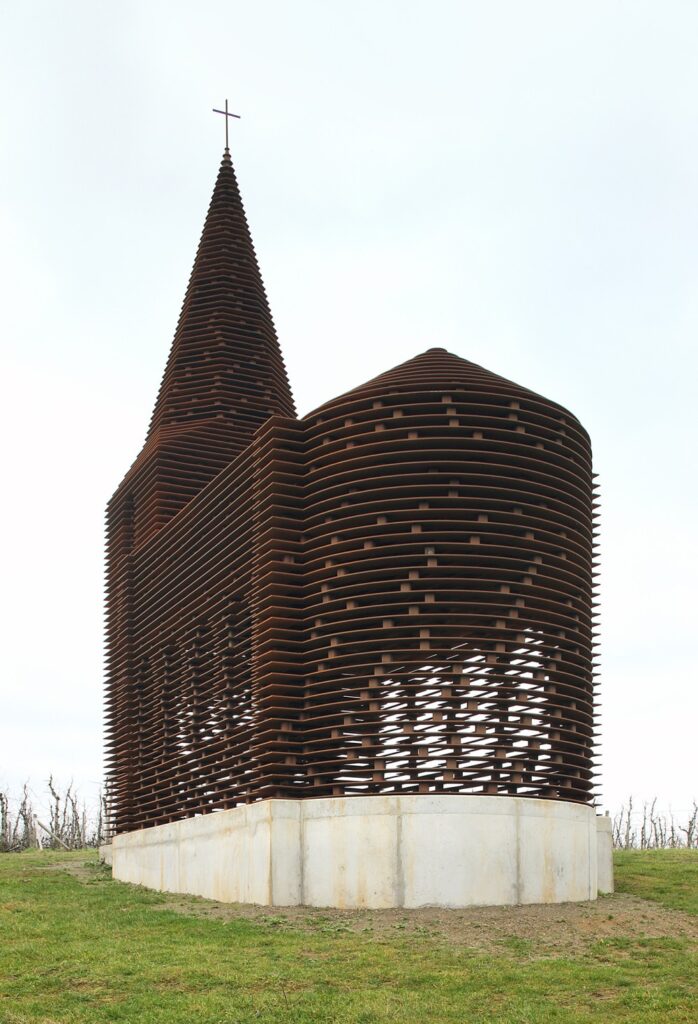
The artwork also sparks a conversation about the potential reuse of abandoned churches. Instead of letting outdated religious buildings slowly disappear, they could be reborn as iconic public artworks. This approach not only preserves cultural memory but also creates new visual and intellectual value for modern communities. This isn’t just about physical preservation; it’s about reviving the spirit of sacred spaces in a new, more open, and diverse social context.
‘Reading Between the Lines’ is more than just an architectural piece—it’s an experience of transformation, showing how we perceive the world with both intuition and emotion. Stepping inside, you are drawn into the gaps between the steel layers, in a space without doors or solid walls. Everything merges with nature, creating a realm that feels both real and illusory. Without any religious symbols, all that remains are emotions and a deep connection to the surrounding space.
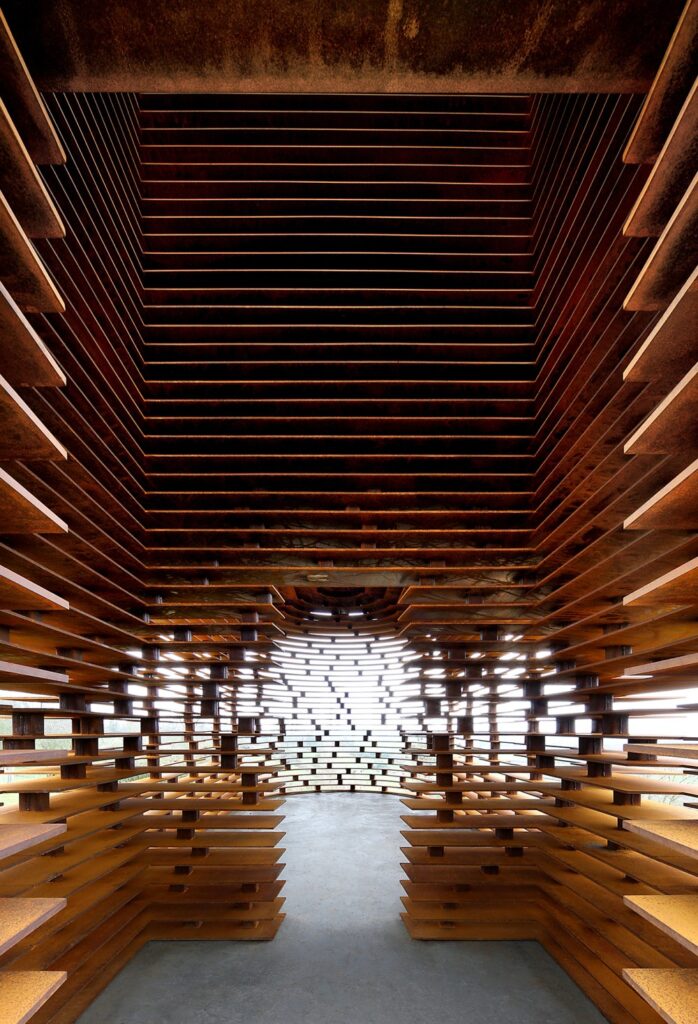
This moment allows for emotions and contemplation to connect with the innermost parts of one’s soul. You can immerse yourself in private thoughts, feeling everything flow with the current of life—the past, and the unknown future. In this quiet symphony of memories and future hopes, every sound, light, and small gesture seems to touch an unnamed layer of emotion. In that moment, you don’t just see the world outside; you see yourself clearly and profoundly.
Source:
Archdaily
Archixplore
Dezeen
Gijs Van Vaerenbergh
Stylepark
Studio International
Z33
Images: Gijs Van Vaerenbergh
